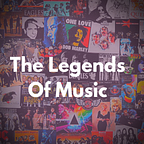Smells Like Teen Spirit: The Story Behind Nirvana’s most famous song
It doesn’t matter what era you listen to “Smells Like Teen Spirit” in, it’ll always sound like the future of music. In a nutshell that’s the best way I can summarise Nirvana’s most famous song to you. It’s raw…it’s full of attitude…it’s got a certain attitude to it, that can never be surpassed by any band again. Whether we admit it or not “Smells Like Teen Spirit” was a product of the frustration and anger being channeled by the youth of the 90’s, which led to Kurt channeling “the dichotomy of punk rage and alienation”, in an effort to “write the ultimate pop song”
Intro
Here’s a song, which single handedly changed everyone’s perspective on what to expect out of the growing ‘grunge’ movement from Seattle in the 1990’s. The era of pop themed tuned fuelled by synthesisers and keyboards were now replaced by guitar-driven music, specifically designed to introduce chaos and anarchy onto the listener. That’s exactly what happened during the grunge movement, which originated from Seattle during the 1990’s. At the heart of this movement lies a pissed-off Kurt Cobain attacking any man, individual or authority that’s focused on making these kids conform to society. Before Nevermind came rolling around Kurt accomplished this successfully by producing an album full of aggressive grunge tunes titled Bleach, which highlighted the attitude and anger he was trying to display in the music.
However, as time passed Nirvana went through the same process every band experiences in their lifetime, which was the quest for fame.
Intention with the record
The mentality behind Nirvana was simple, create an album full of polished grunge songs, which were more melodic in nature. To accomplish this Cobain recruited producer Butch Vig and began paying more attention to the artists that inspired him. These were popular bands like R.E.M., The Melvins & The Pixies. His intention was to reinvent his sound, in an effort to differentiate the band from their contemporaries who continued their path to introduce anarchism. Out of all the bands mentioned earlier The Pixies were the most equipped to help the band achieve this goal as they utilised the soft-loud dynamic, which really took the listener on a different journey altogether. This dynamic not only set the tone for the album it became the template on, which Smells Like Teen Spirit was built. Producer Butch Vig best explained Cobain’s intentions with this album in an interview with Rolling Stone magazine by saying he “had that dichotomy of punk rage and alienation,” “but also this vulnerable pop sensibility”.
Musical Composition
The song is modelled after a F–B♭–A♭–D♭ chord progression, where the main guitar riff consists of four power chords played in a syncopated sixteenth note strum by Cobain. These chords were double tracked to create a “more powerful” sound, which occasionally lapses into a suspended chord voicing due to Cobain playing the bottom four strings of the guitar for the thickness of sound. When questioned about the similarity of the comparison of the riff to that of Boston’s 1976 hit “More Than a Feeling” he is quoted saying “It was such a clichéd riff. It was so close to a Boston riff or The Kingsmen’s ‘Louie Louie.’” During the verses, Cobain used a Small Clone effect pedal to add a chorus effect.
“Smells Like Teen Spirit” employs a “somewhat conventional formal structure”, which holds four, eight, and twelve-bar sections, including an eight-bar verse, an eight-bar pre-chorus, and a twelve-bar chorus. Musicologist Graeme Downes, frontman for the band the Verlaines, says that “Smells Like Teen Spirit” illustrates developing variation, where a concept of development and a variation of that development are united. Pieces of this structure are marked with shifts in volume and dynamics, which display the quiet to loud template mentioned earlier.
The quiet verses are structured in a manner, with wobbly, chorused guitar, which is followed by the dramatic, loud inspired choruses. Eventually this song proved this to be the template that was followed by alternative rock bands. The verses utilise the same chord progression as the chorus, where Cobain’s two-note guitar line appears over Novoselic’s root-note eighth note bassline. As the song progresses and the chorus get nearer, Kurt plays the same two notes on every beat of the measure and repeats the word “Hello”. As the first and second chorus get nearer, Cobain simultaneously begins singing the word “Yay” and performs a unison bend on his guitar.
The final act of his on the song, comes after the second chorus where, Cobain plays a 16-bar guitar solo restating his vocal melody from the verse and pre-chorus. The closing refrain has him yell “A denial” repeatedly as his voice gets strained from the yelling.
